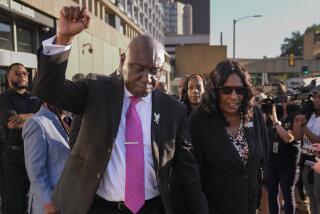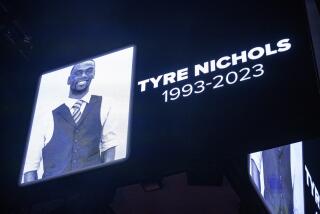Mike Nichols, acclaimed director of âThe Graduate,â dies at 83
Mike Nichols had reasons to fear he would always be the hapless outsider.
He had fled Hitlerâs Germany as a child and landed in New York knowing only two English phrases. (âPlease donât kiss meâ was one of them.) Then he struggled through his school years as âthat little bald kidâ after losing all his body hair in a medical mishap.
From those shaky beginnings, however, Nichols sailed into a remarkable showbiz career. He broke new ground in comedy in the late 1950s as half of the satirical duo Nichols and May before finding his most enduring success as a director of Hollywood and Broadway hits, including classic Neil Simon comedies such as âBarefoot in the Parkâ and the landmark films âWhoâs Afraid of Virginia Woolf?â and âThe Graduate.â
âOn the first day of rehearsal,â he once recalled in the Washington Post about his directing debut with the Simon comedy, âI thought, âWell, look at this. Here is what I was meant to do.â I knew instantly that I was home.â
Nichols, whose talents put him in a rarefied group of artists who won all four of the entertainment worldâs top honors â the Emmy, Grammy, Oscar and Tony â died after a heart attack Wednesday night at the New York home he shared with his wife, ABC Newsâ Diane Sawyer. He was 83.
His death was announced by James Goldston, president of ABC News.
With May, Nichols created two-person character sketches that deftly ridiculed the neuroses and pretensions of American life during the Eisenhower and Kennedy eras. After their Grammy Award-winning partnership peaked in a 1960-61 Broadway run of âAn Evening with Mike Nichols and Elaine May,â the duo parted ways and he changed course.
The Simon comedy âBarefoot in the Park,â with Robert Redford and Elizabeth Ashley as the newlyweds, was a long-running smash hit and earned Nichols his first Tony Award as a director in 1964.
Over the next five decades, he amassed awards, including an Oscar for âThe Graduateâ and eight Tonys, the last of which was for the 2012 revival of âDeath of a Salesmanâ starring Philip Seymour Hoffman.
Nicholsâ golden-boy status was assured when he made his filmmaking debut directing Elizabeth Taylor and Richard Burton as the tempestuous married couple in the 1966 screen adaptation of the Edward Albee play âWhoâs Afraid of Virginia Woolf?â The critically acclaimed drama won five Academy Awards, including best actress for Taylor and best supporting actress for Sandy Dennis.
His next film directing effort brought him his first Oscar.
âThe Graduate,â the 1967 adaptation of the Charles Webb novel, turned Dustin Hoffman into a star as the directionless upper-middle-class university graduate who has an affair with the unhappily married wife of his fatherâs partner, then falls in love with her college-student daughter.
âNichols had the smarts to cast Dustin Hoffman in a role that was really meant for Robert Redford, and that paved the way for the revolution in casting that occurred in the â70s whereby actors who were essentially character actors like Hoffman, [Al] Pacino and [Robert] De Niro â the ethnic actors âcould become leading men and big movie stars,â said film historian Peter Biskind, whose books include âEasy Riders, Raging Bulls: How the Sex-Drugs-And-Rock ânâ Roll Generation Saved Hollywood.â
The blockbuster hit, which also starred Anne Bancroft as the predatory Mrs. Robinson and Katharine Ross as her daughter Elaine, memorably featured the music of Simon and Garfunkel and added the word âplasticsâ to the pop-culture lexicon.
It also cemented Nicholsâ reputation as a movie director in the minds of many critics.
âAfter âWhoâs Afraid of Virginia Woolf?â even the Hollywood cynics needed relatively little convincing, but with his second film, âThe Graduate,â Mike Nichols demolishes any lingering doubts that he is a brilliant, imaginative and freewheeling movie director,â the Los Angeles Timesâ Charles Champlin wrote in his review.
âI do think that Nichols is one of the best directors of that era,â Biskind told The Times in 2012. âHe had a bit of an up-and-down movie career, but every director makes flops, and the films that did succeed were so brilliant and so pioneering.â
Nicholsâ 22 films included âCarnal Knowledgeâ (1971), âSilkwoodâ (1983), âWorking Girlâ (1988) and âThe Birdcageâ (1996). Among his notable failures were âCatch-22â (1970), âThe Fortuneâ (1975) and âWhat Planet Are You From?â (2000).
His frequent returns to Broadway brought plaudits, including Tonys for Simonâs âThe Odd Coupleâ in 1965, âPlaza Suiteâ in 1968 and âThe Prisoner of Second Avenueâ in 1972; âThe Real Thingâ in 1984; and the musical âSpamalotâ in 2005.
As a producer he shared a Tony in 1977 for best musical âAnnieâ and in 1984 for best play âThe Real Thing.â
In television, Nichols was an executive producer of the 1976-80 dramatic series âFamilyâ and won directing Emmys for the 2001 HBO movie âWitâ and the 2004 HBO miniseries âAngels in America.â
Nichols was born Michael Igor Peschkowsky in Berlin on Nov. 6, 1931. His physician father was a Russian Jewish emigre. His German Jewish mother was the daughter of Gustav Landauer, a leading theorist on anarchism in Germany, and the poet and translator Hedwig Lachmann.
In 1938, Nicholsâ father came to the United States, where he planned to establish a new medical practice in New York before sending for his family.
Four months before Germany invaded Poland in September 1939, 7-year-old Nichols and his 3-year-old brother, Robert, left their ailing mother behind and sailed to New York, where their father had assumed the name Nichols.
Nichols later remembered seeing a sign in a New York delicatessen in Hebrew and asking his father, âIs that allowed here?â
At school, Nicholsâ outsider status was compounded by his wearing a cap to cover his bald head, the result of a rare reaction to a whooping cough vaccination that caused him to permanently lose all of his body hair when he was 4.
âI was quietly unhappy,â Nichols, who later wore a wig, recalled of his school days in a 1984 New York Times interview. âI didnât fit.â
Their mother remained in Germany about a year and a half before she escaped and was reunited with her family.
Nicholsâ father died of leukemia a few years later and his mother had to take on a series of jobs to support them.
He continued his education on scholarships and graduated from the Walden School in Manhattan in 1948. Two years later, he entered the University of Chicago with the intention of taking pre-med courses to become a psychiatrist.
But Nichols, whose interest in theater had been sparked at 16 when he took a date to see Tennessee Williamsâ landmark âA Streetcar Named Desireâ on Broadway, soon gave up the idea of going to medical school and began acting in campus theater productions.
He was appearing in a production of August Strindbergâs âMiss Julieâ when, as he recalled in a 2000 interview with the New Yorker magazine, he noticed âthis evil, hostile girl in the front row staring at me throughout the performance.â
The girl was Elaine May, who was unofficially auditing classes at the university. As a child, she had acted in a traveling Yiddish theater operated by her father, Jack Berlin. She was married for the first time at 16 and had a young daughter who was being raised by her mother in Los Angeles.
Several weeks after Nichols saw May in the audience, their friendship was launched when he spotted her sitting in a Chicago train station waiting room.
He later recalled approaching her and saying in a Central European accent, âMay I seet down, plis?â
âIf you veesh,â she replied, as they proceeded to improvise a meeting between two spies.
âWe had instant rapport,â said Nichols, who had what the New Yorker article termed âa brief romanceâ with May after their train-station meeting.
After dropping out of the university in 1953, Nichols returned to New York to study method acting with Lee Strasberg at the Actors Studio. Unable to land any acting jobs, he relocated to Chicago in 1955 and joined the newly formed Compass Players, whose charter members included May.
With the Compass Players, a precursor to Second City, âElaine and I found the whole world of comedy together. ... That is to say, our way of seeing things and doing things meshed,â he said in a 2010 interview with The Times.
One of their memorable sketches, between a rocket scientist and his mother, who fills him with guilt for not calling her, grew out of a phone call Nichols received from his own mother.
âMy mother called and said, âMichael, this is your mother, do you remember me?ââ Nichols recalled. âI said, âMom, can I call you right back?â Then I called Elaine and said, âI have a piece for tonight.â I told her the line and she yelled with laughter. That is all we ever said.
âThen we showed up that night and got on the stools and we did the scene as it was. ... That is what happened with Elaine and me. We thought enough alike and differently to have these things happen.â
After moving to New York in late 1957, Nichols and May became overnight sensations performing at the Village Vanguard and on TVâs âOmnibusâ and the Steve Allen and Jack Paar shows.
Nicholsâ partnership with May, he later said, provided the foundation for becoming a director.
âI was always saying, âCanât you do that faster?â and âYouâre taking too long over this,âââ he told the New York Times Magazine in 1984. âSheâd fill things. Iâd shape them. She had endless capacity for invention. My invention was not endless. But it taught me about beginnings, middles and ends. I had to push the sketch ahead, because I couldnât invent as she could.â
Despite his success, Nichols, prior to the opening of âDeath of a Salesmanâ in 2012, said that he marveled at the assuredness he displayed directing his first plays but he felt âanything but confidentâ as a director in his 80s.
Directing, he said, âis mystifying. Itâs a long skid on an icy road, and you do the best you can to stay on the road. ... If youâre still here when you come out of the spin, itâs a relief. But youâve got to have the terror if youâre going to do anything worthwhile.â
Nicholsâ first three wives were Chicago TV personality Patricia Scot, Margo Callas and novelist Annabel Davis-Goff.
He is survived by Sawyer, his wife of 26 years; three children from his previous marriages; and four grandchildren.
[email protected]McLellan is a former Times staff writer.
Times staff writers Steven Zeitchik and Elaine Woo contributed to this report.
More to Read
Start your day right
Sign up for Essential California for the L.A. Times biggest news, features and recommendations in your inbox six days a week.
You may occasionally receive promotional content from the Los Angeles Times.






